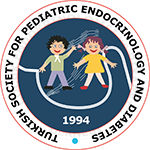Abstract
Introduction
The management of type 1 diabetes (T1D) in children aims to achieve an HbA1c of <7%, a good quality of life and a life similar to that of their peers. While the HbA1c <7% target may be difficult to achieve, it is possible that national programs, quality control programs and setting team targets can achieve significant reductions in HbA1c.
Methods
The records of children with T1D followed up in our department between 2020 and 2022 were analyzed. Children and their families received a comprehensive education including an 'Individual Treatment Plan', nutrition and carbohydrate counting. All HbA1c measured during follow-up were averaged for each child separately. Continuous glucose monitoring (CGM) data from the last visit was evaluated in terms of achieving CGM consensus targets. To assess the effect of CGM use and automated insulin delivery system (AID) use, subjects were divided into 3 groups as multiple dose insulin (MDI) and CGM users, non-AID pump users and AID users and evaluated.
Results
The 480 children included in the study had a mean HbA1c of 7.8±1.5% at the first visit. The median HbA1c value during the two-year follow-up was 7.1%. Of the participants, 43% had an HbA1c <7%. Evaluating cases by treatment modalities and glucose measurement methods revealed taht AID users having the lowest mean HbA1c (7±0.7%).
Conclusions
While diabetes technologies have significantly improved T1D treatment, we believe that holistic approaches focusing on patient behaviors, comprehensive education, teamwork, written individualized treatment plans, and tighter metabolic goals are effective in achieving better glycemic outcomes.



